Since time immemorial, a favorite offseason pastime for the passionate baseball fan has been to scratch out possible batting orders for their favorite team for the coming season. You might do it on a text file you bring up surreptitiously on your office computer. You might do it on the back of a napkin in a coffee shop. You might punch it up on your favorite social media platform and put it out there for all your friends to see. However you do it, musing about lineups is a wonderful way to bridge the gap between the holidays and the languorous days until teams finally report to spring training.
The trade rumors are still floating about, but with this week's acquisitions of Starling Marte by the Arizona Diamondbacks and Nicholas Castellanos by the Cincinnati Reds, the pool of names likely to fill out any of those lineups is more or less fixed. A few weeks ago, we took a snapshot of the starting rotations across baseball. Today, we do the same with the projected lineups for every team.
Teams are ranked based on projected 2020 production and playing time for each club's anticipated base lineup. Teams move players around the field and in and out of the lineup more than ever these days, so the number of days through the season in which you'll actually see these precise lineups is likely to be limited. But we've got to scratch out something on those napkins, right?
The clubs are slotted according to their projected rate of runs created per 600 plate appearances for the players listed. The players were selected based on whom I anticipate will get the most playing time over the course of the season rather than who is expected to be on the Opening Day lineup card. Most of these lineups are simply the team's probable lineup against right-handed starters, though we'll make mention of likely platoon tweaks that will be needed.
Each team's ranking is listed for the following categories: contact (strikeout percentage); patience (walk percentage); power (isolated power, i.e., slugging percentage minus batting average); speed (based on a statistical speed score, not actual measured foot speed via Statcast), and balance (how well a lineup matches up against both lefties and righties). All numbers mentioned in this piece have been converted to a park-neutral context.
The forecast batting orders are really just educated guesses, based on each player's average lineup slot over the past couple of years and how they were deployed toward the end of last season. Finally, we've listed how many "core" hitters each lineup features as well as the numbers of holes in it. A hitter is classified as a core hitter if he projects to reach at least 90 runs created per 600 plate appearances. A hitter becomes a hole if his projection dips under 75 RC/600.
1. Houston Astros (96.5 RC/600)
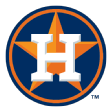
1. George Springer (R)
2. Jose Altuve (R)
3. Alex Bregman (R)
4. Michael Brantley (L)
5. Yordan Alvarez (L)
6. Carlos Correa (R)
7. Yuli Gurriel (R)
8. Josh Reddick (L)
9. Martin Maldonado (R)
Contact: 1 | Patience: 3 | Power: 3 | Speed: 27 | Balance: 7
Core hitters: 6 | Lineup holes: 1
Some lineups are built for depth. Others have holes in spots where the team has selected for defense, but the overall numbers are propped up by a core of elite hitters. The Astros have it all. Balance and depth. Patience, contact and power off the bat. Houston doesn't run much, though the Astros are an athletic group. The only lineup hole is at catcher, whether they go with Maldonado or newcomer Dustin Garneau. With so many elite hitters, the Astros can afford to forgo offense at that spot.
2. Los Angeles Dodgers (95.5)
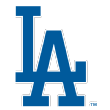
1. Joc Pederson (L)
2. Max Muncy (L)
3. Justin Turner (R)
4. Cody Bellinger (L)
5. Corey Seager (L)
6. Alex Verdugo (L)
7. Gavin Lux (L)
8. Will Smith (R)
9. Pitcher (--)
Contact: 7 | Patience: 1 | Power: 1 | Speed: 26 | Balance: 30
Core hitters: 5 | Lineup holes: 0
The one thing you might note about the Dodgers is their dead-last ranking in lineup balance. In Lux, Pederson and Verdugo, Los Angeles has some guys who don't project as well against lefties as they do against righties. But the Dodgers have terrific options in their lefty lineup not listed here -- Kike Hernandez, A.J. Pollock and Chris Taylor. Because the Dodgers substitute so often during games, they don't really have eight regulars. It's more like 11 or 12. The Dodgers are more of a take-and-rake group than the Astros, but Houston can't match L.A.'s depth. No one can.
3. New York Mets (93.8)

1. Brandon Nimmo (L)
2. Jeff McNeil (L)
3. Pete Alonso (R)
4. Robinson Cano (L)
5. J.D. Davis (R)
6. Michael Conforto (L)
7. Wilson Ramos (R)
8. Amed Rosario (R)
9. Pitcher (--)
Contact: 9 | Patience: 20 | Power: 4 | Speed: 24 | Balance: 4
Core hitters: 5 | Lineup holes: 0
The Mets have dazzled my projection system this winter and I've spent a long time studying them to understand why. It's certainly possible that the system is overcorrecting for pitcher-friendly Citi Field. But when I spot check other systems such as the Davenport Translations, I have to conclude that the Mets' base lineup just looks really good on paper. Third best in the majors? That would be something. Health is a big factor, more for the Mets than other teams because their depth is limited. However, the core looks good ... if Alonso doesn't drop off too much from his rookie season ... if Cano regresses instead of falling off a cliff, as he might do given his age ... if Conforto and Nimmo rediscover their 2018 production ... if Davis is for real and Rosario continues the progress he demonstrated over the latter half of the 2019 campaign. That's a lot of ifs, but the projection sees a team with power up and down the lineup, no holes and upper-level sticks at more than half the positions on the field. And if a couple of positions falter, the Mets can hold out hope for comeback seasons from Jed Lowrie and/or Yoenis Cespedes, who aren't even a part of these numbers.
4. Los Angeles Angels (90.2)
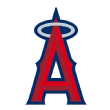
1. David Fletcher (R)
2. Mike Trout (R)
3. Anthony Rendon (R)
4. Shohei Ohtani (L)
5. Albert Pujols (R)
6. Justin Upton (R)
7. Jo Adell (R)
8. Jason Castro (L)
9. Andrelton Simmons (R)
Contact: 2 | Patience: 2 | Power: 8 | Speed: 13 | Balance: 19
Core hitters: 3 | Lineup holes: 3
This is one of the most fun lineups to look at as we approach spring training. Trout, Rendon, Ohtani, Pujols. OK, the right-now reality of all of these players isn't all there, at least in the case of Pujols, but the name recognition is something. As mentioned, I used a season-long projection, which means I plucked Adell out of the minors to eventually fill the void opened by the departure of Kole Calhoun. We don't yet know what the touted, toolsy Adell will become, but it's possible that 20 years from now, we'll look at the Angels of the next couple of years and say, "Wow, Pujols and Adell overlapped?"
5. Chicago Cubs (90.1)
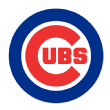 1. Ian Happ (B)
1. Ian Happ (B)
2. Kris Bryant (R)
3. Anthony Rizzo (L)
4. Javier Baez (R)
5. Kyle Schwarber (L)
6. Willson Contreras (R)
7. Jason Heyward (L)
8. Nico Hoerner (R)
9. Pitcher (--)
Contact: 14 | Patience: 7 | Power: 5 | Speed: 21 | Balance: 6
Core hitters: 3 | Lineup holes: 1
The Cubs have understandably taken a lot of heat this winter for failing to shake up what seemed to be a roster gone stagnant. With the grievance between Bryant and the team settled on Wednesday and thus locking in his current trade value, it's certainly possible that shake-up could still happen. However, for all the negativity around the Cubbies, let's not forget that this team made the postseason four years running and still has a deep group of position players in their prime.
6. Oakland Athletics (89.1)
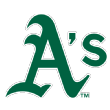 1. Marcus Semien (R)
1. Marcus Semien (R)
2. Matt Olson (L)
3. Matt Chapman (R)
4. Khris Davis (R)
5. Mark Canha (R)
6. Stephen Piscotty (R)
7. Ramon Laureano (R)
8. Sean Murphy (R)
9. Franklin Barreto (R)
Contact: 28 | Patience: 13 | Power: 2 | Speed: 25 | Balance: 23
Core hitters: 3 | Lineup holes: 1
The rating for power used here is based on overall extra-base ability, but the A's actually project to be the best homer-hitting club in the majors this season, at least once ballparks are factored in. It's really a classic A's lineup -- power, patience and lots of strikeouts. The one hole is at second base, where I've penciled in a Barreto/Tony Kemp platoon for now. The top four of Oakland's lineup stacks up against anyone's in baseball if Davis can have a bounce-back season.
7. Atlanta Braves (88.7)
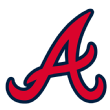 1. Ronald Acuna Jr. (R)
1. Ronald Acuna Jr. (R)
2. Ozzie Albies (B)
3. Freddie Freeman (L)
4. Marcell Ozuna (R)
5. Nick Markakis (L)
6. Dansby Swanson (R)
7. Travis d'Arnaud (R)
8. Johan Camargo (R)
9. Pitcher (--)
Contact: 5 | Patience: 10 | Power: 13 | Speed: 11 | Balance: 25
Core hitters: 3 | Lineup holes: 1
The Braves will have a different look this season, with Ozuna stepping into the outfield and Josh Donaldson now in Minnesota. But it's no surprise the still-young Braves profile as an elite lineup even without Donaldson. The balance rating isn't great, as they have a lot of hitters who have been a lot better against lefties than righties over the past couple of years. In my lineup against lefties, I have Austin Riley slotted in at third base instead of Camargo, and lefty-mashing Adam Duvall in place of the 37-year-old Markakis. It's certainly possible that Riley could end up holding down an everyday role, which would give the Braves even more upside in their daily lineup.
8. Boston Red Sox (88.0)
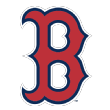 1. Mookie Betts (R)
1. Mookie Betts (R)
2. Rafael Devers (L)
3. Xander Bogaerts (R)
4. J.D. Martinez (R)
5. Andrew Benintendi (L)
6. Michael Chavis (R)
7. Mitch Moreland (L)
8. Jackie Bradley Jr. (L)
9. Christian Vazquez (R)
Contact: 13 | Patience: 5 | Power: 12 | Speed: 15 | Balance: 2
Core hitters: 4 | Lineup holes: 2
If Benintendi can improve upon his OKish 2019 production, the Red Sox will have a top five as good as anyone. If they could get Betts and Martinez at their 2018 level, while getting Bogaerts and Devers to match what they did in 2019, that would be truly dynamic. It's a lot to ask. The holes in the Boston attack are at the bottom, with Bradley and Vazquez. Both are capable of outperforming their forecast to give Boston an airtight batting order.
9. New York Yankees (87.7)
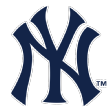 1. DJ LeMahieu (R)
1. DJ LeMahieu (R)
2. Aaron Judge (R)
3. Gleyber Torres (R)
4. Giancarlo Stanton (R)
5. Gary Sanchez (R)
6. Brett Gardner (L)
7. Miguel Andujar (R)
8. Gio Urshela (R)
9. Luke Voit (R)
Contact: 18 | Patience: 14 | Power: 11 | Speed: 28 | Balance: 16
Core hitters: 3 | Lineup holes: 0
The Yankees have a few high-profile regression candidates, a group headlined by LeMahieu, Urshela and Mike Tauchman. They have some age to worry about in Gardner and have to replace the departed Didi Gregorius. They also have hopes for full, healthy seasons from Judge, Stanton and Andujar, which they didn't get in 2019. That might well obliterate any concerns about roster regression. New York's position group suffers a bit when you try to zero in on a group of eight in an exercise such as this. Like the Dodgers, the Yankees have exceptional depth. The Bombers also feature a good blend of skill sets and the upside that comes with pre-peak regulars like Torres and Andujar. New York figures to deploy a lineup without holes on most days, save for the games when starting catcher Sanchez gets a rest.
10. San Diego Padres (87.3)
 1. Fernando Tatis Jr. (R)
1. Fernando Tatis Jr. (R)
2. Tommy Pham (R)
3. Manny Machado (R)
4. Eric Hosmer (L)
5. Trent Grisham (L)
6. Wil Myers (R)
7. Francisco Mejia (B)
8. Jurickson Profar (B)
9. Pitcher (--)
Contact: 21 | Patience: 11 | Power: 7 | Speed: 4 | Balance: 24
Core hitters: 3 | Lineup holes: 0
Led by dual threats like Tatis, Pham, Grisham, Myers and Profar, the Padres have an exciting combination of power and speed in their projected everyday lineup. There are some platoon candidates in the group, such as Grisham. And, really, the Padres might have to consider looking for a righty-hitting counterpart to pair with Hosmer. Still, this is shaping up to be a breakout season for the Friars.
11. Washington Nationals (86.9)
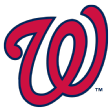 1. Trea Turner (R)
1. Trea Turner (R)
2. Adam Eaton (L)
3. Juan Soto (L)
4. Eric Thames (L)
5. Howie Kendrick (R)
6. Asdrubal Cabrera (B)
7. Victor Robles (R)
8. Yan Gomes (R)
9. Pitcher (--)
Contact: 12 | Patience: 12 | Power: 22 | Speed: 1 | Balance: 11
Core hitters: 2 | Lineup holes: 1
Obviously, losing Rendon hurts. However, the Nationals have gone heavy with solid veterans to improve depth and compensate for the loss of his star power. Newcomers include recognizable names in Thames and Starlin Castro, as well as the returns of 2019 in-season pickup Cabrera and franchise stalwart Ryan Zimmerman, plus World Series hero Kendrick. The Nats have hopes for continued growth from Robles and, perhaps, the same for Soto, though it's fair to wonder how much better he can be. He's an MVP candidate as is. All in all, the Nats profile well on paper. But there is no doubt they'd profile better with Rendon, and the problem with having too many veterans is it's hard to compensate if they all head south at the same time.
12. Minnesota Twins (86.4)
 1. Max Kepler (L)
1. Max Kepler (L)
2. Jorge Polanco (B)
3. Nelson Cruz (R)
4. Josh Donaldson (R)
5. Eddie Rosario (L)
6. Miguel Sano (R)
7. Mitch Garver (R)
8. Byron Buxton (R)
9. Luis Arraez (L)
Contact: 19 | Patience: 8 | Power: 10 | Speed: 23 | Balance: 10
Core hitters: 3 | Lineup holes: 1
While the system doesn't see a repeat record-breaking power outbreak from the Twins, it does see another group with a lot of power and patience. With Donaldson and Cruz anchoring the lineup, the Twins are clearly in win-now mode. The prospect of rosterwide regression and the possibility of age- or injury-related declines from Cruz and Donaldson does make you a bit more nervous about the Twins than you'd normally be. After all, they are a defending division champ who pulled off one of the winter's biggest free-agent signings. Overthinking aside, the Twins look well positioned to repeat in the American League Central.
13. Chicago White Sox (86.1)
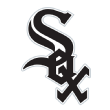 1. Yoan Moncada (B)
1. Yoan Moncada (B)
2. Luis Robert (R)
3. Jose Abreu (R)
4. Edwin Encarnacion (R)
5. Eloy Jimenez (R)
6. Yasmani Grandal (B)
7. Nomar Mazara (L)
8. Tim Anderson (R)
9. Nick Madrigal (R)
Contact: 16 | Patience: 26 | Power: 9 | Speed: 7 | Balance: 1
Core hitters: 3 | Lineup holes: 0
Last season, gaping lineup and roster holes wiped out any hopes Chicago had of rising to at least mediocrity. In terms of everyday players, those holes have been filled by the White Sox's frenzied offseason. This projection is exciting on the face of it -- a powerful, athletic group with the kind of balance that should allow Rick Renteria to run out the same group just about every day, with Mazara's weakness against lefties being the exception. Encarnacion's age is a concern. So is the number of free swingers. But Chicago also has the dynamic group of Robert, Moncada, Jimenez and Madrigal, all of whom have better days ahead and, one hopes, a steep growth curve.
14. Milwaukee Brewers (85.5)
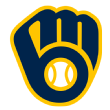 1. Lorenzo Cain (R)
1. Lorenzo Cain (R)
2. Keston Hiura (R)
3. Christian Yelich (L)
4. Avisail Garcia (R)
5. Ryan Braun (R)
6. Luis Urias (R)
7. Omar Narvaez (B)
8. Eric Sogard (L)
9. Pitcher (--)
Contact: 6 | Patience: 18 | Power: 27 | Speed: 5 | Balance: 9
Core hitters: 2 | Lineup holes: 1
Cain and Yelich remain the constants for the Brewers. Beyond that, it's hard to say who is going to be in the lineup on any given day. There are a lot of players with comparable offensive projections who don't necessarily have obvious platoon limitations. What we know is that Craig Counsell will put his players in the best position to succeed at just about every micro-moment that presents itself during the season. I never have confidence in my Brewers projections, so for their fans, the fact that their base lineup lands in the upper half of the majors is probably a great sign.
15. Tampa Bay Rays (84.3)
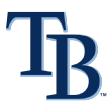 1. Austin Meadows (L)
1. Austin Meadows (L)
2. Brandon Lowe (L)
3. Yandy Diaz (R)
4. Hunter Renfroe (R)
5. Yoshitomo Tsutsugo (L)
6. Ji-Man Choi (L)
7. Mike Zunino (R)
8. Willy Adames (R)
9. Kevin Kiermaier (L)
Contact: 25 | Patience: 19 | Power: 6 | Speed: 18 | Balance: 26
Core hitters: 3 | Lineup holes: 2
The Rays are another team that moves players in and out of the lineup with impunity, so there are about five or six other names you could easily sub into this group without changing the overall outlook that much. Tampa Bay will hope that Zunino bounces back from a terrible offensive season and that Tsutsugo makes a successful transition from across the Pacific. In the meantime, this is the season when we might start to peer expectantly into the Rays' system hoping for the first recall of super prospect Wander Franco.
16. Philadelphia Phillies (83.8)
 1. Andrew McCutchen (R)
1. Andrew McCutchen (R)
2. Jean Segura (R)
3. Bryce Harper (L)
4. Rhys Hoskins (R)
5. J.T. Realmuto (R)
6. Didi Gregorius (L)
7. Scott Kingery (R)
8. Adam Haseley (L)
9. Pitcher (--)
Contact: 4 | Patience: 9 | Power: 20 | Speed: 12 | Balance: 3
Core hitters: 2 | Lineup holes: 2
The Phillies once again have two former MVPs in their everyday lineup, though they didn't get MVP-level production from either McCutchen or Harper a season ago. McCutchen's MVP days are probably behind him, but he was having a terrific season before tearing his ACL last June. The Phillies don't need MVP Cutch, they need the pre-injury, 2019 Cutch -- and that will be a key to the 2020 season. As for Harper, it still feels as if he has one or two huge seasons in him, at least. After a solid but unspectacular Philly debut, you don't really hear much about Harper any longer in discussions of "best in the game." He's capable of getting back in that conversation and, if you hadn't noticed, this will be his age-27 season. The holes for the Phillies as projected by my system are two: Kingery and Haseley. With Kingery presumably taking over third base from Maikel Franco, there is every reason to believe that he will consolidate his gains in 2019 and become an above-average producer. As for Haseley, well, he didn't hit lefties during his debut season and might need a platoon partner. He didn't have much of a split as a minor leaguer. Still, unless someone from among him, Roman Quinn and Nick Williams emerges, center field might become an area of focus for the Phillies if they become a buyer during the season.
17. Cincinnati Reds (82.9)
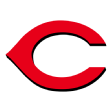 1. Jesse Winker (L)
1. Jesse Winker (L)
2. Joey Votto (L)
3. Eugenio Suarez (B)
4. Nicholas Castellanos (R)
5. Mike Moustakas (L)
6. Aristides Aquino (R)
7. Tucker Barnhart (B)
8. Freddy Galvis (B)
9. Pitcher (--)
Contact: 11 | Patience: 16 | Power: 18 | Speed: 30 | Balance: 5
Core hitters: 3 | Lineup holes: 2
You couldn't see it, but before I typed these words, I shrugged. I'm fairly high on the Reds, as are a lot of people this winter. They've been very active and the National League Central remains very winnable. I just don't have a feel for what the Reds will look like. The lineup that you see here is based on the eight players who project the best offensively this season. It doesn't include offseason signee Shogo Akiyama -- Cincinnati's first Japanese player -- whom many pencil in as the Reds' everyday center fielder and leadoff man. That certainly might happen. While I've got Akiyama forecast for more than 400 plate appearances, I have him moving around some and thus not landing in the base lineup. Same deal for the promising Nick Senzel. Yet we can also assume that David Bell isn't going to roll through many full games with a defensive outfield of Winker, Aquino and Castellanos. Senzel could at least platoon with Moustakas at second, but did you pay Moose all that dough to make him a platoon guy? And if you slot in Akiyama every day, how you do leave Winker out of the mix against righties? Sit Aquino? These are probably all good problems to have but, suffice to say, I'll be very interested to see how things shake out during spring training for the Reds.
18. Cleveland Indians (82.7)
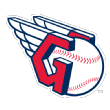 1. Francisco Lindor (B)
1. Francisco Lindor (B)
2. Cesar Hernandez (B)
3. Jose Ramirez (B)
4. Carlos Santana (B)
5. Franmil Reyes (R)
6. Jake Bauers (L)
7. Roberto Perez (R)
8. Oscar Mercado (R)
9. Tyler Naquin (L)
Contact: 3 | Patience: 4 | Power: 17 | Speed: 2 | Balance: 17
Core hitters: 2 | Lineup holes: 4
The Indians' outfield puzzle is a bit of a head-scratcher. But Cleveland projects to put out a daily lineup of high-contact, disciplined, athletic hitters who figure to complement the typically strong Indians pitching staff. In contrast to the guys in the grass, the Cleveland infield looks locked in. It's an unusual setup, with four everyday switch-hitters without pronounced platoon splits likely to occupy the top four spots in Terry Francona's lineup.
19. St. Louis Cardinals (81.3)
 1. Dexter Fowler (B)
1. Dexter Fowler (B)
2. Tommy Edman (B)
3. Paul DeJong (R)
4. Paul Goldschmidt (R)
5. Yadier Molina (R)
6. Matt Carpenter (L)
7. Harrison Bader (R)
8. Kolten Wong (L)
9. Pitcher (--)
Contact: 23 | Patience: 6 | Power: 21 | Speed: 6 | Balance: 8
Core hitters: 1 | Lineup holes: 3
With the Redbirds, it's always about how the whole roster fits together and the different units complement one another. Yet at some point, you've got to score some runs and this group lacks high-level punch. Goldschmidt is the only forecast elite hitter and his numbers have been on the decline. As a group, the Cardinals have been inconsistent at the plate the past couple of seasons. Without an impact acquisition this winter -- and one notable departure in Marcell Ozuna -- St. Louis will need a couple of career seasons to repeat in the NL Central, or an emergent young player such as Tyler O'Neill, Bader or prospect Dylan Carlson.
20. Toronto Blue Jays (80.9)
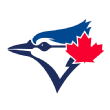 1. Bo Bichette (R)
1. Bo Bichette (R)
2. Cavan Biggio (L)
3. Vladimir Guerrero Jr. (R)
4. Travis Shaw (L)
5. Rowdy Tellez (L)
6. Lourdes Gurriel Jr. (R)
7. Randal Grichuk (R)
8. Teoscar Hernandez (R)
9. Reese McGuire (L)
Contact: 24 | Patience: 21 | Power: 14 | Speed: 16 | Balance: 22
Core hitters: 1 | Lineup holes: 1
The average age of this group is 26, making the Jays' lineup one of the greenest in the majors. That's a blessing. The top three hitters alone make Toronto worth watching on any given night. A side note: I decided not to separate Shaw and Tellez in this configuration. However, one thing to watch this season is whether managers are even more reticent than ever to stack lefties, given the advent of the three-batter minimum rule.
21. Pittsburgh Pirates (80.4)
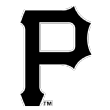 1. Adam Frazier (L)
1. Adam Frazier (L)
2. Bryan Reynolds (B)
3. Gregory Polanco (L)
4. Josh Bell (B)
5. Colin Moran (L)
6. Kevin Newman (R)
7. Jason Martin (L)
8. Luke Maile (R)
9. Pitcher (--)
Contact: 10 | Patience: 24 | Power: 26 | Speed: 17 | Balance: 27
Core hitters: 2 | Lineup holes: 3
Batting average and a little speed. Not really the most common formula for a 2020 offense, but those appear to be the Pirates' best traits. You have to wonder if the trade that sent Starling Marte to Arizona is just the beginning of the end for this tepid group, with Frazier, Polanco and maybe even Bell following him out of Pittsburgh in the coming months.
22. Seattle Mariners (79.2)
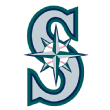 1. Mallex Smith (L)
1. Mallex Smith (L)
2. J.P. Crawford (L)
3. Mitch Haniger (R)
4. Daniel Vogelbach (L)
5. Tom Murphy (R)
6. Evan White (R)
7. Kyle Seager (L)
8. Kyle Lewis (R)
9. Shed Long (L)
Contact: 27 | Patience: 17 | Power: 15 | Speed: 9 | Balance: 20
Core hitters: 1 | Lineup holes: 4
There were surprises in how these rankings came out. I'm as surprised by some of them as you are. You design a system and then you stand by the results; it's really all you can do. Many will be stunned by the Mets' No. 3 ranking. New Yorkers will fixate on the difference between that and the Yankees at No. 9, even though it's just a rating of eight-man base lineups, not teams as a whole. I've got the Yankees projected as the majors' best team in 2020 and the Mets as a factor, but not a favorite, in the NL East. These lineups are just one piece of the picture. Anyway, I bring this up now because the Mariners' ranking was the most surprising to me of all. But don't get too excited about it. Smith is one of the most prominent speed guys in the majors. He just needs to learn how to use it. But he, and every other player in this lineup, projects to strike out at least 109 times. The thing to keep in mind is that even if the Mariners' base group might project to not be horrible, that's about all you can say about this roster. The depth is thin. Vogelbach can't play against lefties and yet I had a hard time finding a viable righty-hitting platoon partner for him -- and he's a designated hitter. But, again, Smith can really run.
23. Arizona Diamondbacks (79.0)
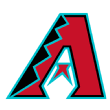 1. Ketel Marte (B)
1. Ketel Marte (B)
2. Starling Marte (R)
3. David Peralta (L)
4. Eduardo Escobar (B)
5. Kole Calhoun (L)
6. Christian Walker (R)
7. Carson Kelly (R)
8. Nick Ahmed (R)
9. Pitcher (--)
Contact: 8 | Patience: 22 | Power: 23 | Speed: 14 | Balance: 13
Core hitters: 1 | Lineup holes: 2
When Arizona landed Starling Marte this week -- giving the D-backs a Marte par-tay atop their lineup -- it spurred a few "can Arizona challenge the Dodgers?" angles. And, sure, it can. It's just unlikely. There is a heap o' regression pushing this forecast down for the Diamondbacks -- for the Ketel half of the Marte par-tay, for Walker, for Kelly and Ahmed. However, some future iteration of my forecasting system will learn to integrate a regression override when an organization proves to be unusually adept at helping players move to, and stay on, a higher plane of performance. Arizona might be one such organization, and if No. 23 is the over/under for this lineup, I'm betting the Diamondbacks do a heck of a lot better than that. But I wouldn't put money on them overtaking the Dodgers.
24. Texas Rangers (78.6)
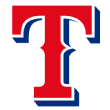 1. Shin-Soo Choo (L)
1. Shin-Soo Choo (L)
2. Danny Santana (B)
3. Joey Gallo (L)
4. Willie Calhoun (L)
5. Rougned Odor (L)
6. Elvis Andrus (R)
7. Todd Frazier (R)
8. Ronald Guzman (L)
9. Robinson Chirinos (R)
Contact: 29 | Patience: 15 | Power: 16 | Speed: 8 | Balance: 14
Core hitters: 1 | Lineup holes: 5
This an example of what I was talking about with stacking lefties. If you're in a tight game with the Rangers and you've got Gallo, Calhoun and Odor scheduled in order, that three-batter minimum is not even a consideration. So, perhaps, Chris Woodward will avoid setting up his batting order in this way. He didn't really use it last season. He might not even want any combination of two of these guys hitting back-to-back. It's the kind of thing I mean when I write that the new rule isn't a reduction of strategy, it's just a different kind of strategy. There are new wrinkles to consider.
25. Miami Marlins (77.6)
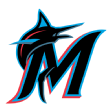 1. Jonathan Villar (B)
1. Jonathan Villar (B)
2. Corey Dickerson (L)
3. Brian Anderson (R)
4. Jesus Aguilar (R)
5. Jorge Alfaro (R)
6. Miguel Rojas (R)
7. Isan Diaz (L)
8. Lewis Brinson (R)
9. Pitcher (--)
Contact: 26 | Patience: 28 | Power: 24 | Speed: 10 | Balance: 15
Core hitters: 0 | Lineup holes: 4
Rebuilding clubs usually project poorly because they've cleared their roster of usable, everyday veterans who have the kind of track record that makes for a solid projection. The Marlins lacked that last season, but they've improved their outlook by bringing in Villar, Dickerson and Aguilar. Still, they probably shouldn't go printing up World Series tickets just yet.
26. San Francisco Giants (77.4)
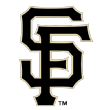 1. Mike Yastrzemski (L)
1. Mike Yastrzemski (L)
2. Brandon Belt (L)
3. Buster Posey (R)
4. Alex Dickerson (L)
5. Evan Longoria (R)
6. Brandon Crawford (L)
7. Mauricio Dubon (R)
8. Steven Duggar (L)
9. Pitcher (--)
Contact: 15 | Patience: 23 | Power: 25 | Speed: 22 | Balance: 12
Core hitters: 0 | Lineup holes: 3
ESPN Daily Newsletter: Sign up now!
The aged half of this lineup -- Belt, Posey, Longoria, Crawford -- is all under contract beyond this season. Patience, Giants fans, patience.
27. Kansas City Royals (77.4)
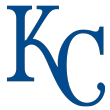 1. Whit Merrifield (R)
1. Whit Merrifield (R)
2. Adalberto Mondesi (R)
3. Hunter Dozier (R)
4. Jorge Soler (R)
5. Ryan O'Hearn (L)
6. Salvador Perez (R)
7. Alex Gordon (L)
8. Maikel Franco (R)
9. Nicky Lopez (L)
Contact: 20 | Patience: 27 | Power: 19 | Speed: 3 | Balance: 18
Core hitters: 1 | Lineup holes: 4
Keeping Mondesi healthy and moving in the direction of stardom is the biggest objective for the Royals for players in this lineup. At the very least, there will be some feel-good moments early in the season when beloved backstop Perez makes his return after missing all of last season. Perez says he hopes to play another 10 years.
28. Colorado Rockies (75.6)
 1. Charlie Blackmon (L)
1. Charlie Blackmon (L)
2. David Dahl (L)
3. Nolan Arenado (R)
4. Trevor Story (R)
5. Daniel Murphy (L)
6. Ryan McMahon (L)
7. Raimel Tapia (L)
8. Tony Wolters (L)
9. Pitcher (--)
Contact: 22 | Patience: 25 | Power: 30 | Speed: 19 | Balance: 21
Core hitters: 1 | Lineup holes: 5
On one hand, it's easy to be suspicious of this ranking. Surely, overcompensating for Coors Field plays into it. To be sure, filtering out park effects in an effort to isolate the true level of production for a Rockies hitter remains a major challenge. Yet those adjustments didn't keep Arenado from rating as elite. They didn't keep Story from just missing the elite cutoff even before applying a positional adjustment. Blackmon isn't far off elite, either. Maybe the Rockies' lineup should be higher than 28th and maybe people will forget this rating when Colorado manages to rank in the top 10 in runs again this season. But this is a lineup full of holes. I've written this before, but Colorado finished 29th in road wOBA last season and has not signed a major league free agent since that season ended.
29. Detroit Tigers (73.5)
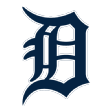 1. Niko Goodrum (B)
1. Niko Goodrum (B)
2. Jonathan Schoop (R)
3. Miguel Cabrera (R)
4. C.J. Cron (R)
5. Jeimer Candelario (B)
6. Christin Stewart (L)
7. Victor Reyes (L)
8. Austin Romine (R)
9. JaCoby Jones (R)
Contact: 30 | Patience: 29 | Power: 28 | Speed: 20 | Balance: 28
Core hitters: 0 | Lineup holes: 4
It's a nasty confluence of factors. The Tigers' base lineup projects to strike out the most of any of these groups, while walking less frequently than all but one team and ranking third-to-last in isolated power. It can't be easy to put together a roster with that particular combination of factors. The future will be better. It has to be.
30. Baltimore Orioles (73.1)
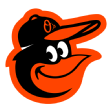 1. Hanser Alberto (R)
1. Hanser Alberto (R)
2. Trey Mancini (R)
3. Anthony Santander (B)
4. Renato Nunez (R)
5. Austin Hays (R)
6. Chris Davis (L)
7. Chance Sisco (L)
8. Steve Wilkerson (B)
9. Jose Iglesias (R)
Contact: 17 | Patience: 30 | Power: 29 | Speed: 29 | Balance: 29
Core hitters: 0 | Lineup holes: 6
Well, of course. There is no more permanence to this particular batting order than there was to that of the 1969 Seattle Pilots. But at least the Orioles will still be around a year from now.
